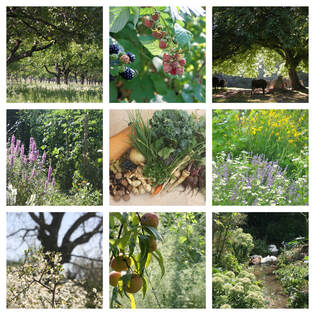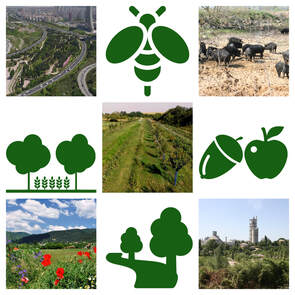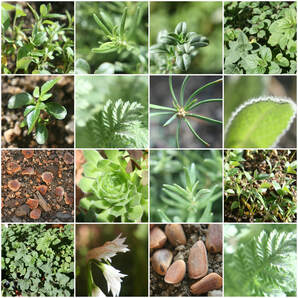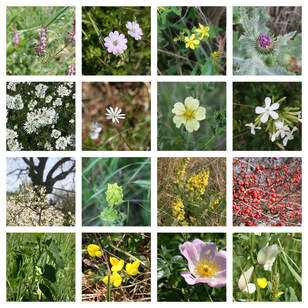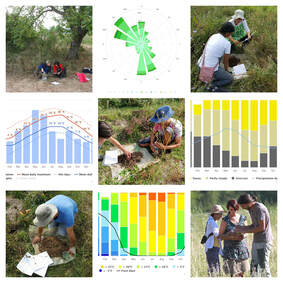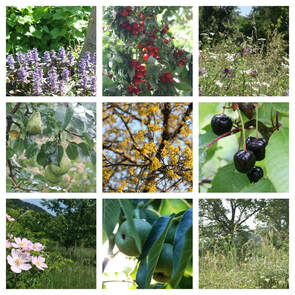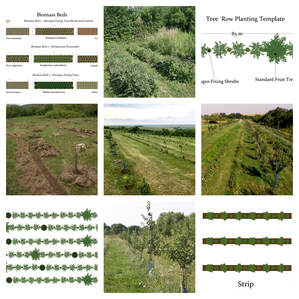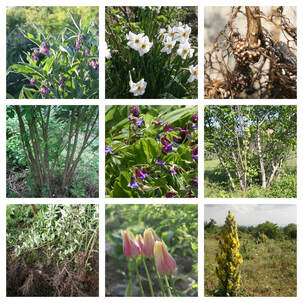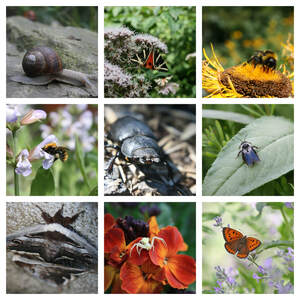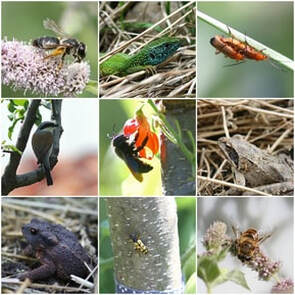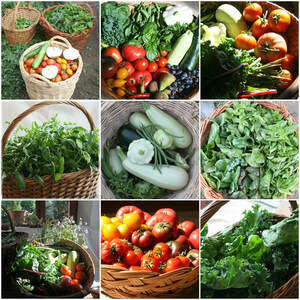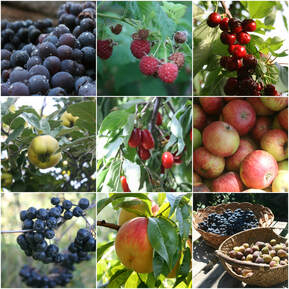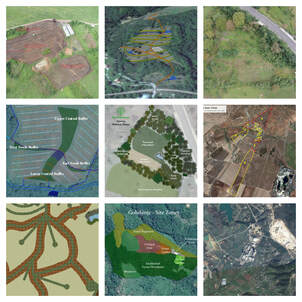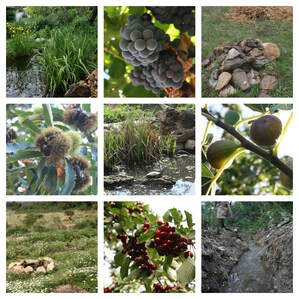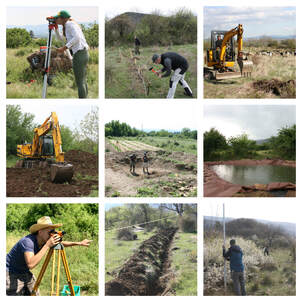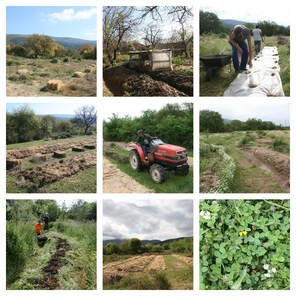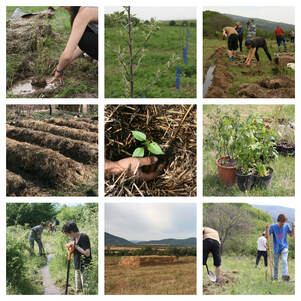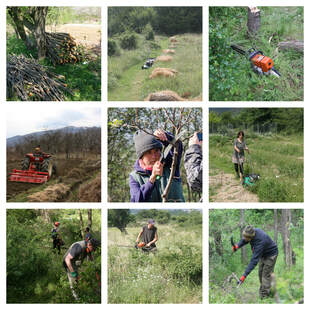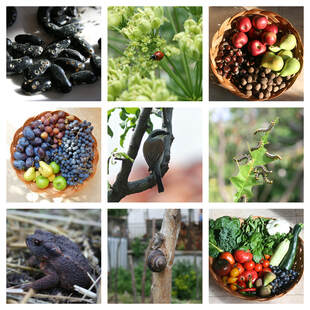Regenerative Landscape Design - Online Interactive Course
Week by Week - 2023
If you do not have time to do the full course or are familiar with some of the content we cover but would like to fill in the gaps in your knowledge, you are welcome to sign up for the modules or weekly sessions that interest you.
What are Polycultures?
Week 1 - 3rd - 9th May
|
"What exactly is polyculture?" is the question we kick off the course with. We look at the history of polyculture, why it is relevant and desirable to pursue, and present the core qualities that make a polyculture
|
Additional Material - Video of our Polyculture Gardens - Our Polyculture Garden Design Schemes
Organizing Polycultures
Week 2 - 10th - 16th May
|
With a relatively complex matter such as polyculture, it's vital to be able to provide some clarity on what we are dealing with. In chapter 2 we lay out a category system for polyculture that breaks it down into 3 main categories; Infrastructure, Support and Productive polycultures. We go through each individually and discover the applications within each category. |
Additional Material - Example of Productive - Support - Infrastructure Polyculture Planting Schemes - Polyculture Category Sheet
Understanding Plants - Plant needs
Week 3 - 17th - 23rd May
|
In order to make the best plant selection decisions, you need to have a good understanding of a plant's needs and behaviour. Not only will this help you select plants for polycultures but it will also guide implementation and management practices i.e how to plant out, fertilize , irrigate, prune, propagate, protect , harvest etc. In weeks 3 and 4 we learn how to understand plants. |
Additional Material - Fruit and Nut Tree Pollination - Plant Hardiness/Heat Zones - Plant light needs sheet - Role of minerals in plant growth sheet
Understanding Plants - Plant Ecology
Week 4 - 24th - 30th May
|
We continue on our quest to understand our floral friends now looking at how they relate to each other, other organisms in the ecosystem and the soils around them. We look at the power and wonder of ecological succession and how plants can give us clues to the condition of the soil.
|
Additional Material - Nitrogen Fixing Plants - Mineral Repositors - Mycorrhizae - Indicator Plants Sheet - Nitrogen Fixing Plant Video
How to Design Polycultures - Surveying
Week 5 - 31st May- 6th June
|
With a firm understanding of plants under our belts, it's time to move onto understanding our location. In week 5 we present an organised and structured approach to surveying your property and location that will help us to define the parameters of our designs. We end the sessions looking at the value in Establishing Purpose/Multipurpose for our polycultures. |
Additional Material - Scale of Permanence - Water Harvesting Sheets - Soils - Site Survey Sheets - Succession on our Site Video
How to Design Polycultures - Techniques and Practices
Week 6 - 7th - 13th June
|
In week 6 we overview a range of techniques and practices we use within polyculture design, and discover ways to choose plants that are compatible with one another as well as plant combinations that provide habitat for wildlife .
|
Additional Material - Why does biodiversity matter? - Multi layer Polyculture Scheme - Polyculture Design Sheet - Tour of Phronesis Video
How to Design Polycultures - Scaling up Polycultures
Week 7 - 14th - 20th June
|
In week 7 we introduce some design methods that help simplify the complexity of working with multiple plants and how you can use these methods for broad scale application of polyculture.
|
Additional Material - Polyculture Example - Alley Cropping at Venets Permaculture Farm - Component Based Design Example Sheet
How to Design Polycultures - Using Support Plants
Week 8 - 21st - 27th June
|
In week 8 we dig into how to use support plants such as Nfxers MinReps and Biomass plants in your polycultures, and how to utilise the energy and productivity of wild succession to benefit you and wildlife. We end the session looking at what you need to know to select the fruit and nut trees and shrubs you love the most. |
Additional Material - Polyculture Succession Profile - Tethys - Biomass Plants Video - - Mineral Repositor and Nitrogen Fixing Plant Lists
Working with the Wild - Beneficial Organisms
Week 9 - 28th June - 4th July
|
Working with the wild is the key to success in providing food and other resources while enhancing biodiversity. In chapter 9 we discover our wild allies; the role they play in our productive landscapes supporting crop productivity, controlling pests and providing fertility
|
Additional Material - Earthworms - Pest Predators Within our Garden Video - Early Polleniser Polyculture Sheets
Working with the Wild - Creating Habitat
Week 10 - 5th - 11th July
|
Staying with the wild wonders for another week we look closely how we can encourage beneficial organisms to live and breed in our gardens by providing habitat and micro habitat, and how we can rely on wild plants to provide support and build healthy soil.
|
Additional Material - Wildlife Pond Design and Installation - Wild Flower Meadows - Micro habitat within our gardens Video - Habitat for Borgs Sheet
Annual Polyculture Profiles
Week 11 - 12th - 18th July
|
In week 11 we'll look over some tried and tested annual polycultures we have been growing on our site for over 10 years, and discover how to grow vegetables and herbs in polycultures.
|
Additional Material - A year in the life of an annual vegetable polyculture - Sowing - Planting - Harvest Schedules - Annual Polyculture Sheets
Perennial Polyculture Profiles
Week 12 - 19th - 25th July
|
Week 12 we look at examples of perennial polycultures including polycultures for infrastructure, support and production. Each polyculture is profiled in detail with species lists, diagrams , photos and planting plans, along with information on how the polyculture can be expected to perform. We'll also take a look a tour of the gardens and look at how these polycultures are growing here at the project. |
Additional Material - Video of Polycultures - Perennial Polyculture Design Sheets and schematics
Site Design - Site Layout
Week 13 - 26th July - 1st August
|
Time to put your thinking cap on and get your design brain in gear as we go step by step through the site design process and start to get those ideas from your mind into the ground . Week 13 we start with base mapping, cover some great design tools at our disposal, and start iterating the basic layout of our design. |
Additional Material - Design Approaches - Software Design Workflow - Designing for other people
Site Design - Species and Habitat Selection
Week 14 - 2nd - 8th August
|
In week 14 we cover species selection and how to make a planting scheme for your design, where exactly to integrate habitat for wildlife, and making fertility and irrigation budgets for your plant selections. We end the session with the vital step of planning for the implementation and management of the design. |
Additional Material - Windbreak Example - Example of Site Design - Forest Garden 5000 m2 - Irrigation Budget Sheets - Nutrient budget Calculator
Design Implementation - Site Preparation
Additional Material - Pond Installations for Irrigation and Wildlife - Surveying Techniques and our irrigation system Video - Green Path Seed Lists
Design Implementation - Site Preparation
Week 16 - 16th - 22rd August
|
This session we cover how to prepare the ground for planting out a variety of polyculture layouts that include hedging, swale plantings , raised beds and agroforestry systems such as alley cropping.
|
Additional Material - Planting For Wind Pollination - A word on humus and compost - Cover Crops /Green manure Sheets
Design Implementation - Planting out
Week 17 - 23rd - 29th August
|
We continue from last week looking at site preparation techniques for various polyculture layouts including forest gardens, woodlands, pasture and wildflower meadows and end the session with a planting out guide that will help you plan and implement successful planting of your polycultures.
|
Additional Material - Hot Composting - Planters Checklist - Overplanting - Mixed Species Meadow Seed Lists
Design Implementation - Management, Maintenance
Week 18 - 3oth Aug - 5th Sept
|
With your polycultures in the ground and growing, we turn our attention onto how to manage and maintain the landscape. We'll share with you our management plans from having worked with polycultures for over 15 years including pruning and weeding, and how to do these in a way that provides fertility and health to your gardens. |
Additional Material - Tools and Machinery - Fast Coppicing - Pruning Biomass Plants Video
Design Implementation - Management and Growth
Week 19 - 6th - 12th September
|
Week 19 we continue with management strategies looking at how to properly irrigate your gardens, take care of your habitat to provide a haven for biodiversity while producing quality food and other resources, and how to deal with pest & diseases. We'll look at the importance of record keeping and observation, and end the session with how you can grow more plants to expand your gardens |
Additional Material - Pest Observations Video - Record keeping Sheets
Final Design Presentation and Assessment
Week 20 - 13th - 19th September
|
In week 20 we look at what should be included in a final design project and how to present your design in a way that communicates your vision effectively to others. Then over to you to present your design! |
Telephone+359988342649
|
|

